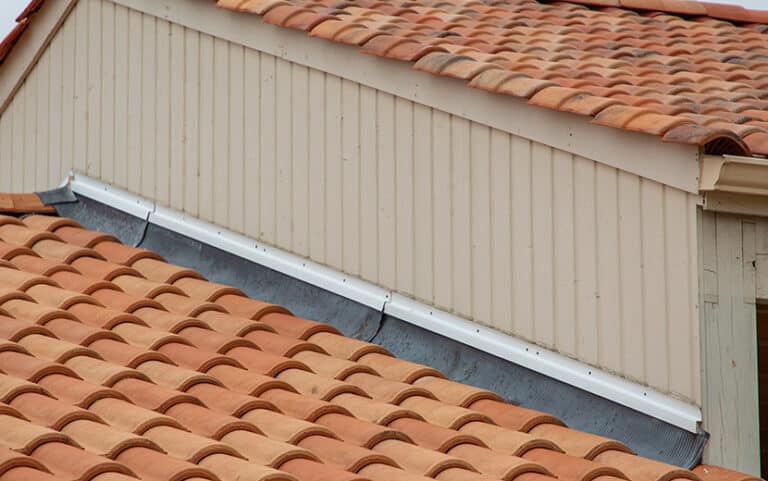The Importance of Roof Flashing: Types, Installation, and Maintenance
Oct 18, 2023
The Importance of Roof Flashing: Types, Installation, and Maintenance
Water damage can lead to severe structural issues in your home if left unchecked. One of the most critical components protecting your home’s interior from external water penetration is roof flashing. Properly installed and maintained roof flashing is essential to ensure the long-term health and performance of your home’s roof. With years of experience as a trusted roofing and solar contractor in Burleson, TX, Honey Bees Roofing & Solar is here to provide expert insights into the vital role of roof flashing, the various types, installation processes, and essential maintenance practices.
Roof flashing is a thin metal or plastic material installed to protect joints, seams, and edges of the roofing system where water might penetrate the inner portion of the house. These areas could include valleys, dormers, skylights, chimneys, and vents. Inadequate or improperly installed flashing can lead to leaks, which can further cause severe problems such as mold, mildew, and rot within your home.
Selecting the most suitable flashing material for your home, ensuring proper installation, and committing to regular maintenance are all crucial factors in protecting your residence from potential water damage. The following guide, prepared by Honey Bees Roofing & Solar, will provide you with valuable information on the significance of roof flashing and how to care for this essential component of your roofing system. Getting a deeper understanding of roof flashing will set you on the path toward more effective protection against the elements and greater peace of mind for your home’s overall performance and longevity.
Different Types of Roof Flashing Materials
There is a variety of roof flashing materials to choose from, each with its unique benefits and drawbacks. The primary factors to consider when selecting a flashing material are cost, durability, and compatibility with your roofing system. Here are some common types of roof flashing materials:
- Aluminum: Aluminum is lightweight, rust-resistant, and relatively inexpensive, making it a popular choice for many homeowners. However, it can be prone to corrosion when in contact with alkaline materials like cement and paint.
- Copper: Known for its durability and resistance to rust, copper flashing is a long-lasting option that requires minimal maintenance and adds a sense of elegance to your roof. However, copper flashing can be more expensive than other materials and might require more skill to install.
- Galvanized Steel: This material consists of a steel base coated with a sealing layer of zinc to prevent corrosion. Galvanized steel flashing offers a balance between affordability and durability, but it may rust over time if the zinc layer becomes compromised.
- Lead: Lead is extremely malleable and resistant to corrosion, making it suitable for intricate rooftop structures. While lead flashing has a long lifespan, it’s more expensive than other options and presents potential health risks if not handled carefully.
Essential Steps in Installing Roof Flashing
Proper installation of roof flashing is critical to ensure its effectiveness in protecting your home from water damage. Although it’s recommended to hire a professional roofing contractor like Honey Bees Roofing & Solar for accurate and secure installations, here are the essential steps involved in the process:
- Evaluate the Roof: Inspect the roofing system for any damage and identify the critical areas, such as valleys, chimneys, and skylights, that need flashing.
- Select the Appropriate Flashing Material: Based on the type of roofing system, climate, and budget, choose the most suitable flashing material for your home.
- Prepare the Surface: Clean the area thoroughly, ensuring it’s free from debris and old sealants. The surface must be dry and smooth before applying the flashing.
- Install the Flashing: Depending on the area and type of flashing material, install the flashing using appropriate fasteners, adhesives, and sealants. Make sure the flashing is securely in place and adequately overlaps to prevent water penetration.
- Inspect and Seal the Flashing: After installation, inspect the flashing to ensure it’s properly adhesive and sealed to prevent water leaks.
Regular Maintenance Practices for Roof Flashing
Regular maintenance is vital to prolong the lifespan and effectiveness of your roof flashing. Here are some best practices for maintaining your roof flashing:
- Inspect Flashing Regularly: Conduct periodic inspections to check for signs of damage or wear in the flashing material, especially after extreme weather conditions like heavy rain, hail, or strong winds.
- Clean Debris: Periodically clear debris, such as leaves and dirt, from the flashing areas to prevent water buildup and potential damage.
- Check for Corrosion or Damage: Inspect the flashing for any signs of corrosion, rust, or other damage that could compromise its effectiveness in protecting your home from water penetration.
- Seal Exposed Edges: If you notice any gaps or exposed edges in the flashing, apply a suitable sealant to ensure protection against water infiltration.
- Contact a Professional: If you detect any significant wear or issues during your maintenance check, hire a professional roofing contractor like Honey Bees Roofing & Solar for a thorough assessment and necessary repair work.
Addressing Common Roof Flashing Problems
Here are some common roof flashing problems and how to address them:
- Improper Installation: If not installed correctly, flashing can be ineffective in preventing water damage. Hiring a professional contractor to assess and repair improper installations or consulting a professional during a DIY installation is crucial.
- Deteriorated Sealant: Over time, the sealant used to secure and seal the flashing may deteriorate, causing gaps and leaks. Reapplying a suitable sealant to the affected areas can resolve this issue.
- Mechanical Damage: Roof flashing can become damaged due to wind, ice, and other external factors. Timely repairs by professionals are essential to prevent further damage.
Conclusion
Understanding the importance of roof flashing, the different types of materials, and essential maintenance practices can significantly contribute to the long-term performance of your home’s roofing system. Proper flashing installation and maintenance can significantly reduce the risks associated with water damage, ensuring the protection and structural integrity of your home. By working with a trusted roofing contractor like Honey Bees Roofing & Solar, you can ensure that your roof flashing is adequately installed, maintained, and repaired, safeguarding your home from potential water damage for years to come.
